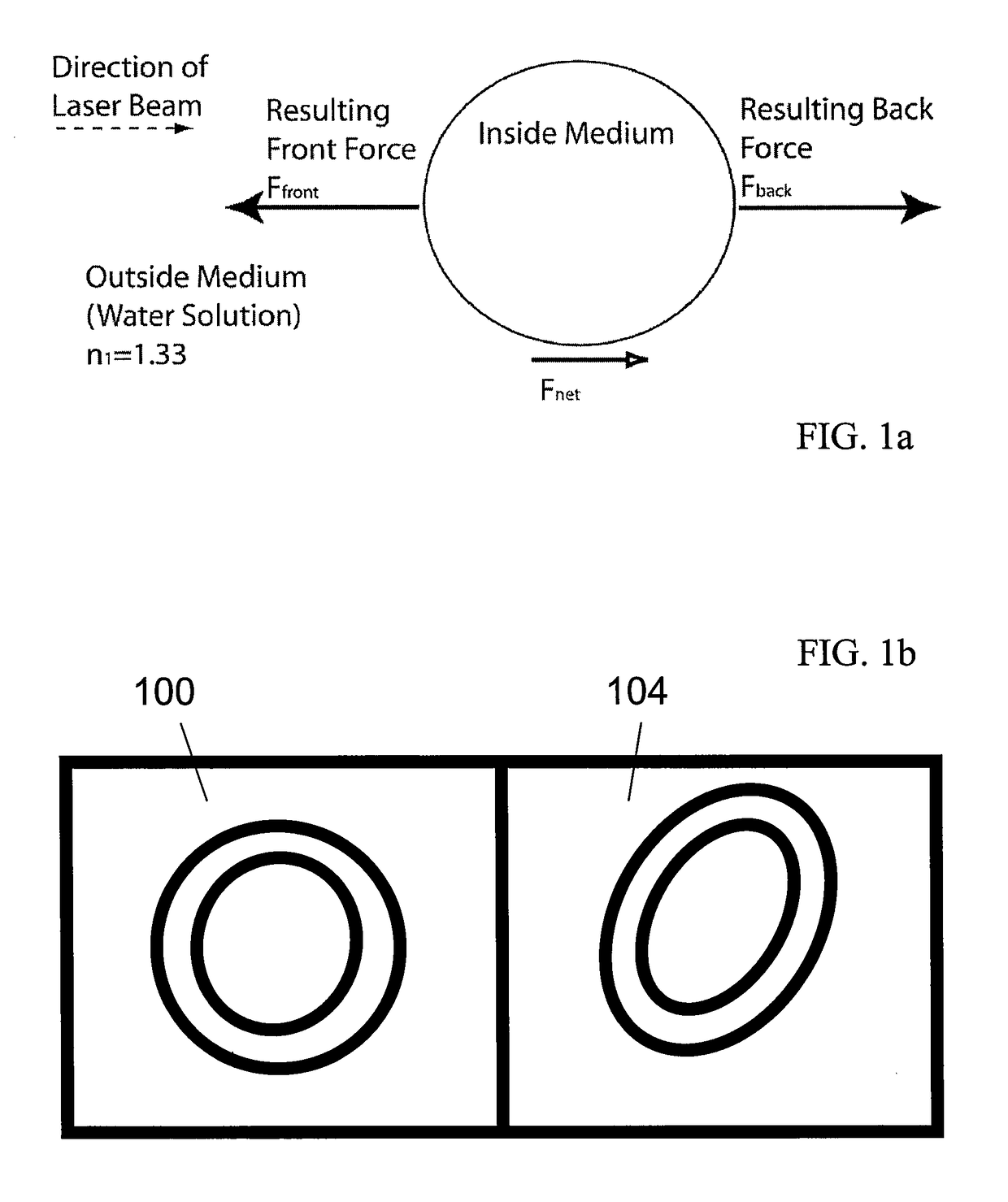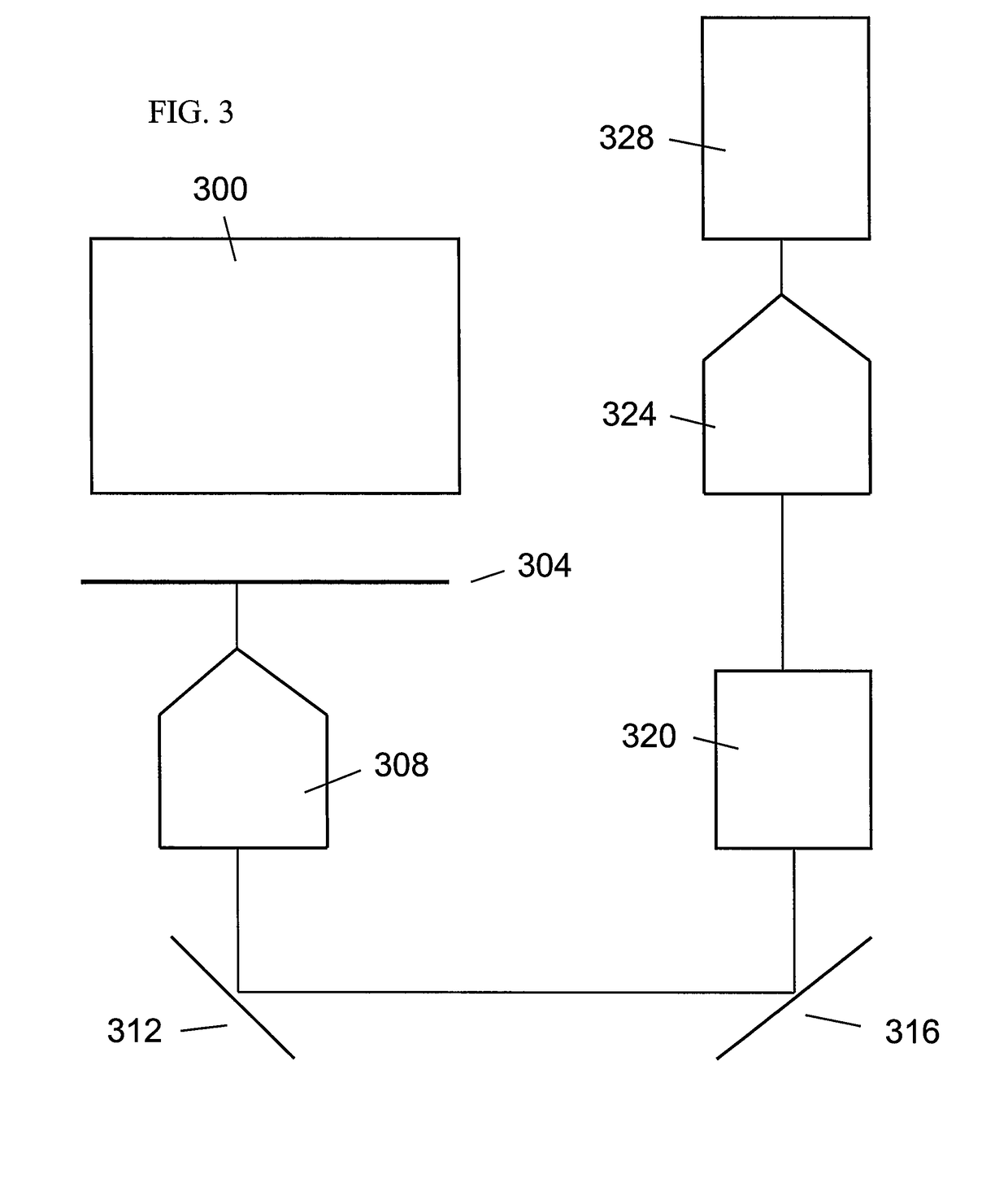Optical-based cell deformability
a technology of optical cells and deformation, applied in the field of optical cell deformation, can solve the problems of significant adverse health effects, limited shelf life of conjugates, and reagents added to the cost of tests, and achieve the effect of increasing the availability of practical bioassay platforms and lowering costs
- Summary
- Abstract
- Description
- Claims
- Application Information
AI Technical Summary
Benefits of technology
Problems solved by technology
Method used
Image
Examples
Embodiment Construction
[0037]With reference now to FIG. 1a, details of orientation / deformation forces that can be exerted on a particle by a light source will be described in accordance with at least some embodiments of the present invention. Cells stretch in an optical system due to the same forces that cause them to be trapped in a laser beam. Not only does a laser exert a force to pull the particle into the Gaussian distribution of the laser, but it also exerts a small force in the negative z direction (downwards), pushing the particle away from the focal point.
[0038]This momentum transfer at the surface of some types of deformable particles causes the stretching force used to orient and / or deform cells. FIG. 1a specifically diagrams the forces acting on a particle when exposed to a single laser beam. When a particle is exposed to two opposing laser beams, the Fnet is cancelled out, and in systems that have deformable membranes, there is a deforming force that acts on the particle. It is possible to us...
PUM
 Login to View More
Login to View More Abstract
Description
Claims
Application Information
 Login to View More
Login to View More - R&D
- Intellectual Property
- Life Sciences
- Materials
- Tech Scout
- Unparalleled Data Quality
- Higher Quality Content
- 60% Fewer Hallucinations
Browse by: Latest US Patents, China's latest patents, Technical Efficacy Thesaurus, Application Domain, Technology Topic, Popular Technical Reports.
© 2025 PatSnap. All rights reserved.Legal|Privacy policy|Modern Slavery Act Transparency Statement|Sitemap|About US| Contact US: help@patsnap.com



